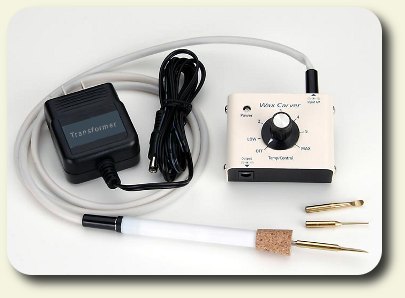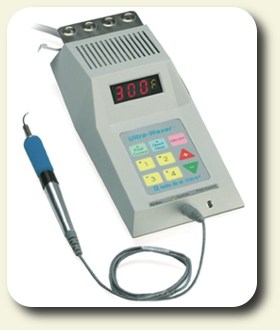
December 2010, Issue 11
Tools
Page 85
 Okay, so this is a tool article and the tool you use most when working with wax is the aforementioned wax pen. The wax pen and the concept of working in wax can be contributed to its founders, or as we know them, Jewelers.
Okay, so this is a tool article and the tool you use most when working with wax is the aforementioned wax pen. The wax pen and the concept of working in wax can be contributed to its founders, or as we know them, Jewelers.
Yes, jewelers came up with the whole concept when they needed to find a way to create multiples of sculpted metal jewelry. Rather than carve each piece out of metal, which is possible but difficult and time consuming, the lost wax process was developed as a way to make one piece, make a mold and cast multiples of it, which in turn would be molded in a throw-away type mold compound that the precious metal was then cast in.

Bingo! Mass production achieved. Originally, before the wax pen (and a technique still used today), metal tools were gently heated over an oil lamp flame and used to melt and push the wax into shape. Later as technology developed the common soldering iron was finessed into an adjustable heat pen with fancier and tinier tips - much like the wood burning pens that I spoke of in a previous article.
Wax can be shaped in a few different ways, depending on the variety you use. Some of the blends today can be shaped like clay when they are warmed and hardening as they cool and allowing you to use the pen and metal tools to carve in the finished details. But the formula used in toys can be formed in only
 two ways: welding together chunks to form the basic shape or casting it in a mold.
two ways: welding together chunks to form the basic shape or casting it in a mold.
The nature of this wax is only liquid or hard, no in-between (think candle paraffin). I prefer the latter technique. I would first sculpt a rough using Castilene©, a wax-based clay that needs to be warmed in order to work. As it cools (much like certain straight wax mixes) it hardens to hold its form, and at that point it can be pushed around with some difficulty using metal tools or carved with scraping tools and knives or dental tools with a sharp edge.
Custom Dolls, Houses & Miniatures / CDHM







